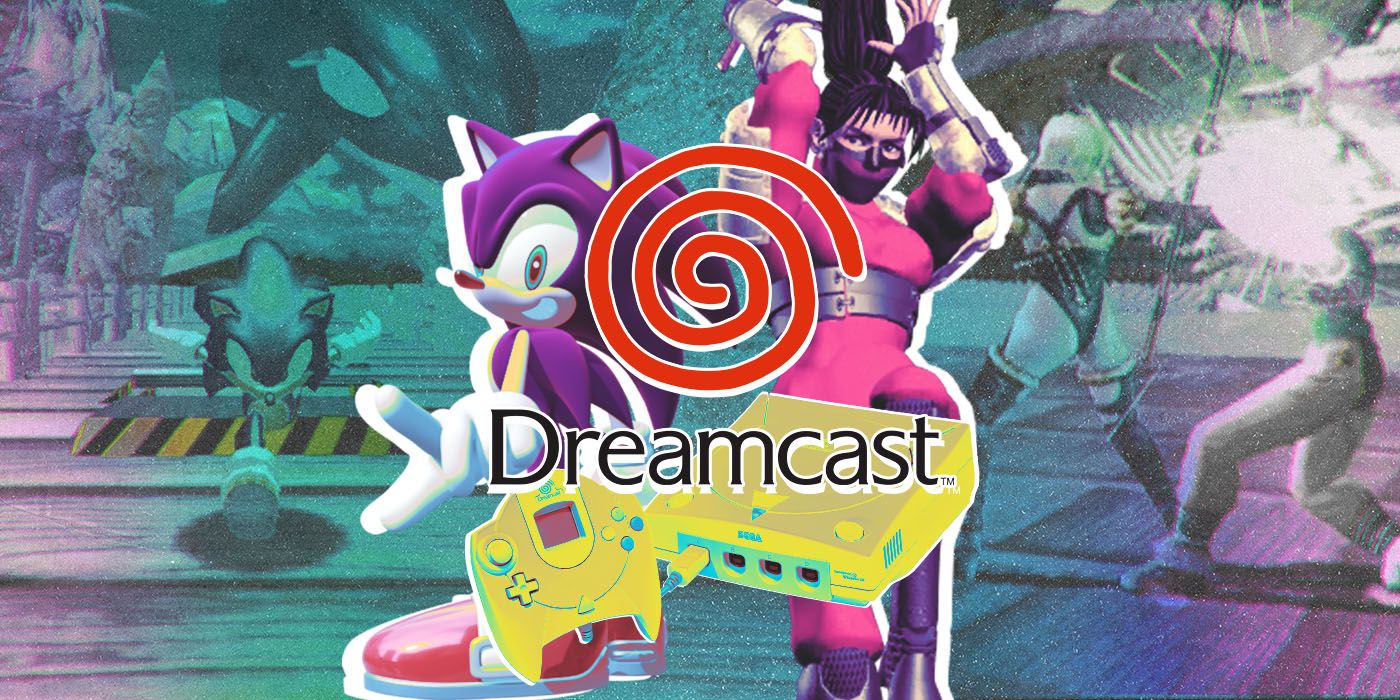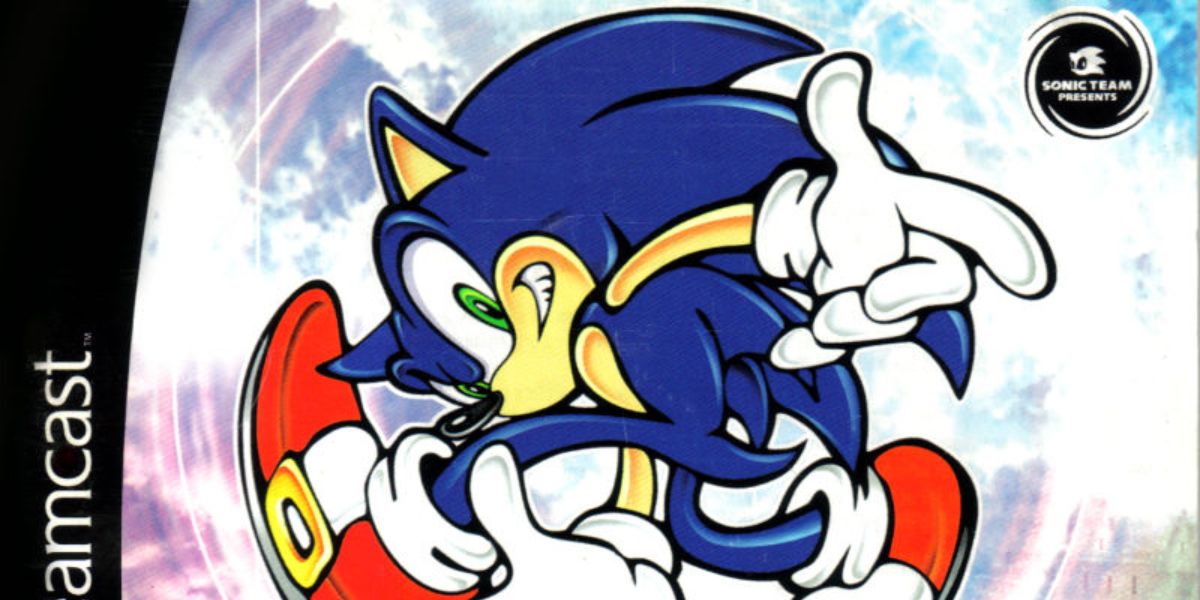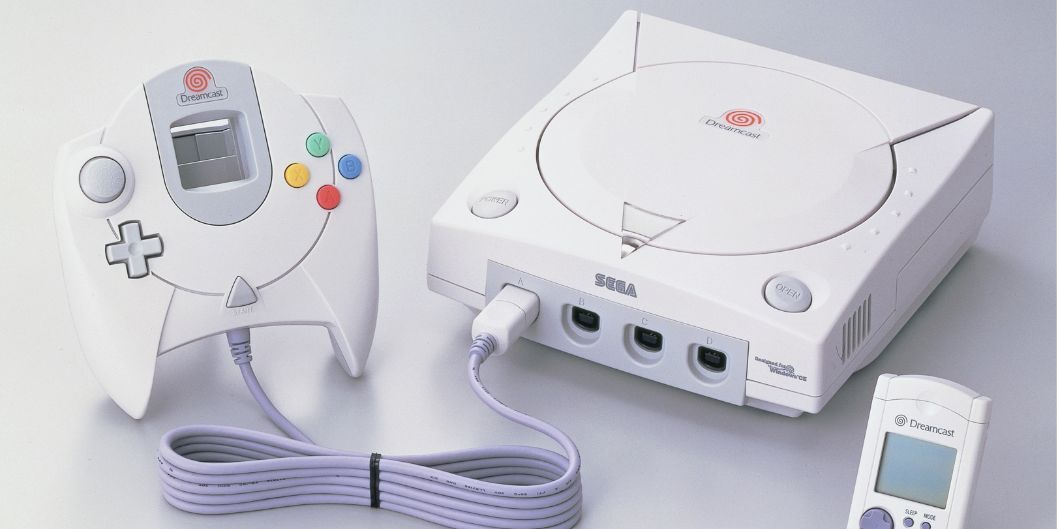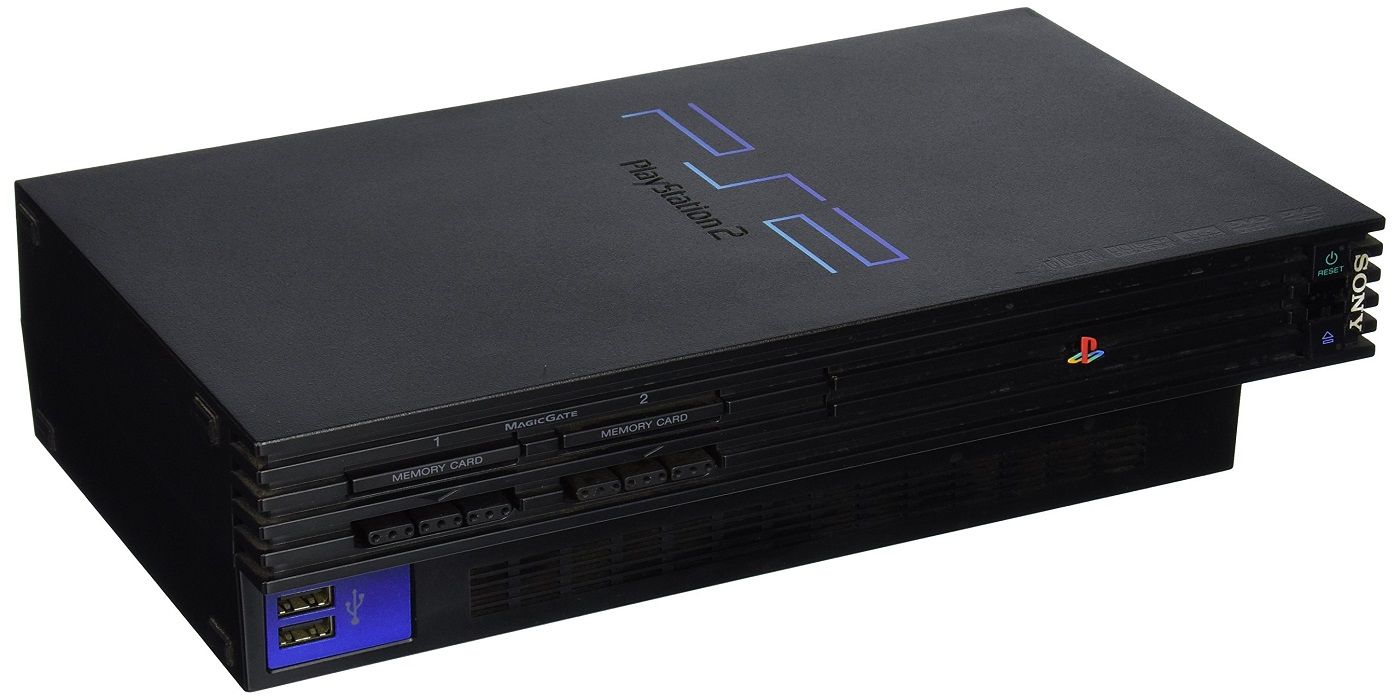Summary
- The Sega Dreamcast was launched in 1999 and was a huge success, bringing in $97 million in just 24 hours.
- Sonic Adventure and Soulcalibur were key games for the Dreamcast launch. Finally having a successful new Sonic game helped put Sony back on the map for a time.
- The Dreamcast's launch was huge but the PlayStation 2's release in 2000 was the beginning of the end. The Dreamcast was discontinued in 2001.
The 1990s were a whirlwind decade for Sega; the company experienced its greatest highs with the Genesis/Mega Drive and some serious lows with the 32X and the ill-fated Saturn. By the summer of 1998, the PlayStation was the king of video games, Nintendo was creating childhood memories with the Nintendo 64 and Sega was without a home console after the early discontinuation of the Sega Saturn. Sega needed to answer the competition and deliver something big in order to stay alive in the console market. The answer came in the form of the next-generation Dreamcast.
Initially launching in Japan on Nov. 27th, 1998 to modest success, Sega of America was looking to push the Dreamcast particularly hard in the United States, where the Sega Genesis had experienced huge success earlier in the decade. The U.S. launch was hyped with the futuristic "It's Thinking" ad campaign and a heavily marketed release date of Sep. 9th, 1999 (9-9-99). The Sega Dreamcast launched for $199 with 18 games available. At the time, it was the most successful console launch ever, bringing in $97,000,0000 in just 24 hours. Even 24 years later, gamers still remember the legendary date of 9-9-99 and the amazing games released that day.
Sonic Adventure And The Dreamcast Launch
One of the key factors that led to the failure of the Sega Saturn in the United States was the lack of a mainline Sonic the Hedgehog game. Fans were expecting Sonic to make the leap to 3D, much like Mario had done in Super Mario 64. Sega's planned 3D Sonic on the Saturn had a troubled development and never materialized, leaving the console without a proper Sonic platformer. A Sega console without Sonic is like a Nintendo console without Mario, and Sega struggled without its famous blue mascot. Sega of America made sure it had Sonic ready to go for the Dreamcast launch with the release of Sonic Adventure.
Sonic Adventure was the long-awaited first true 3D Sonic game. It expanded on Sonic's standard platforming gameplay by adding a hub world, fishing and scavenger missions, and the Chao pet simulator. Reception to Sonic Adventure was positive, with praise going to the beautiful graphics and fun gameplay, although the game was also criticized for its numerous glitches and poor camera. Flaws aside, Sonic Adventure was the 3D Sonic game fans had been clamoring for. With Sonic Adventure, Sega had its biggest money-making franchise back on track, leading to a successful launch of the new console.
Soulcalibur Was Mind-Blowing
Namco's Soulcalibur was another key launch for the Dreamcast. More than just a port of the arcade game, the Dreamcast version improved on the graphics and added new game modes, including a team battle and mission mode. At the time of its release, Soulcalibur was quite possibly the best-looking game to ever grace a home console. The game also ran at a smooth 60 FPS. Soulcalibur was praised unanimously and remains one of the highest-rated video games to this day. It was also a brilliant launch title, as it showcased how powerful and impressive the Dreamcast was. Soulcalibur was the most advanced and cutting-edge game on the market when it was released, and it was available solely on the Dreamcast.
The Dreamcast Launch Featured Games From All Genres
The Dreamcast's initial crop of games showcased a ton of variety. Along with the headlining Sonic Adventure and Soul Calibur, gamers had games from all genres to choose from. The racing genre was well represented, with titles like Tokyo Xtreme Racer and Hydro Thunder available. Fighting game fanatics could also choose to pick up Power Stone or Mortal Kombat Gold. Meanwhile, The House of the Dead II and Blue Stinger represented the horror genre well, while NFL 2K and NFL Blitz 2000 satisfied fans of both simulation and arcade sports games. Sega did an excellent job of making sure the Dreamcast launch lineup was large and varied.
The Dreamcast Peaked At Launch
By the summer of 2000, the Dreamcast was struggling to compete with its last-generation competition. Games like Space Channel 5 and Chu Chu Rocket were acclaimed but did not move console units. Many of the Dreamcast's best games were also published by Sega's own development studios, as third-party developers preferred the larger install base of the PlayStation. The Dreamcast appealed to hardcore gamers looking for colorful and unique arcade-style games, but it lacked major third-party exclusives and story-driven action games that were in vogue by 2000. To add to Sega's misfortunes, the PlayStation 2 was on the way.
The PlayStation 2, with its DVD capabilities, strong third-party support, and expected release of numerous PS2 games, including Metal Gear Solid 2 and Final Fantasy X, was too much for Sega to compete with. The PlayStation 2 was released in March 2000 in Japan and October 2000 in the United States. The PlayStation 2 sales at launch crushed the record launch numbers the Dreamcast had set just a year earlier. While Sega attempted to regain its momentum with high-profile releases like Shenmue and Phantasy Star Online, the Dreamcast's fate had already been sealed. In March 2001, Sega officially ceased production of the Dreamcast, and its game releases ended in February 2002. Sega would no longer manufacture hardware and began to develop and publish games for all major consoles instead.
With the launch of the Dreamcast, Sega had the only next-generation console on the market for a year, in theory giving the console a major advantage, as it mainly competed with the previous generation PlayStation and Nintendo 64 consoles. With great games, a great price, cutting-edge tech, and the promise of online gaming long before Xbox Live, it seemed like the Dreamcast could not possibly fail. Unfortunately for Sega, the promise of strong competition and the inability to follow up on the launch in a major way led the Dreamcast to an early grave.
Even though the Dreamcast's commercial performance did not hold up after launch, the console's legacy lives on. Those who were there will never forget the hype for 9-9-99. Launch games such as Sonic Adventure, Soulcalibur, and Power Stone are still revered to this day. It could not have been more fitting for the Dreamcast to launch right at the end of the '90s, as the Dreamcast was quite possibly the last truly old-school game console, representing the end of the arcade era. Console launches can often be lackluster, but the release of the Dreamcast was an iconic and important launch that set all-new standards for console hype and releases.



-Cropped.jpg)

